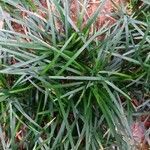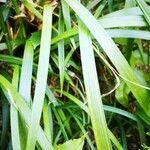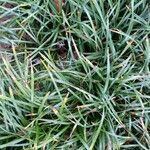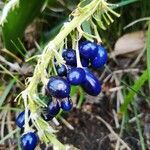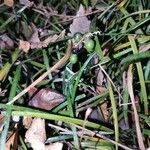A herb. It is a perennial plant. It grows 30 cm high and spreads 45 cm wide. It has stolons or runners. The roots are moderately thick usually with a tuber near the middle or tip. It forms clumps. The leaves are in tufts at the base. They are grass like. They are 10-50 cm long by 2-4 cm wide. The flowering stalk is reduced. It is 2-5 cm long. There can be 10 flowers. The seeds are round and 7-8 mm across.
